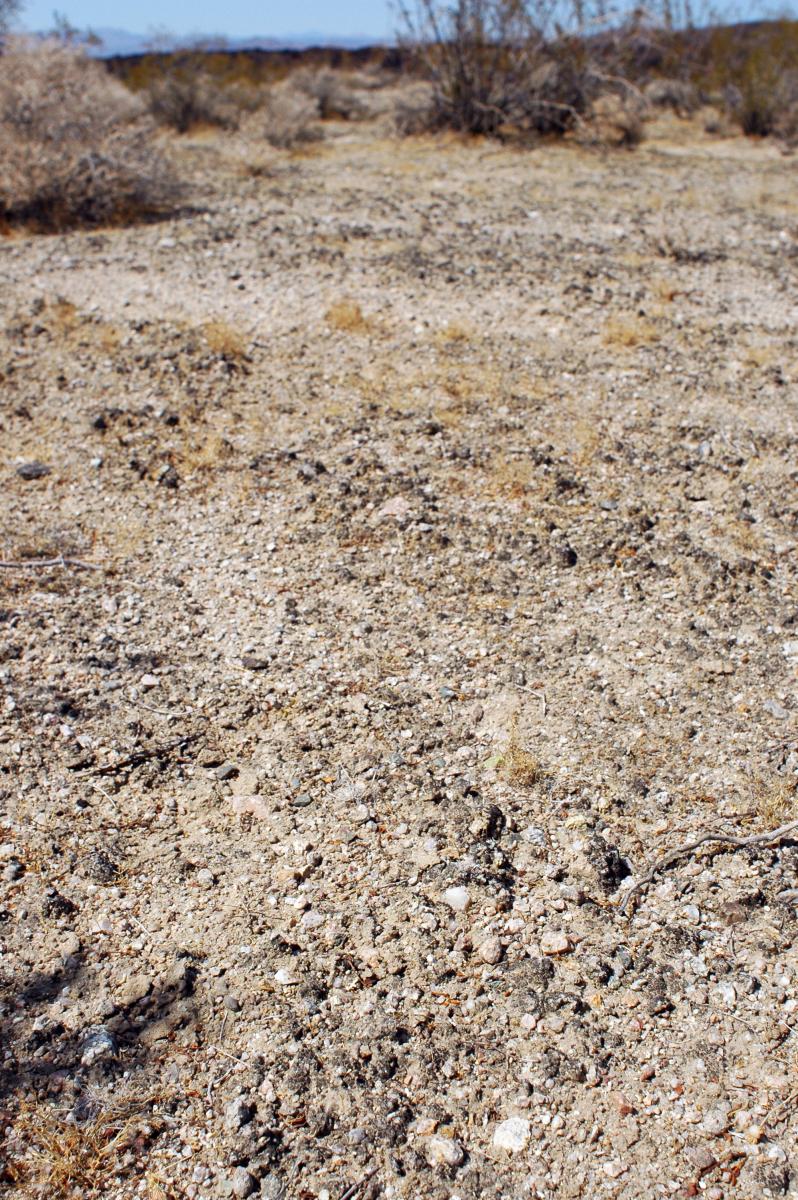Biological Soil Crusts

“Biological soil crusts” are made up of living organisms, primarily cyanobacteria, which bind the surface of the soil together and form a cohesive crust.1 Biological soil crusts are common in ecosystems with high light input on the surface of the soil, including the California desert; up to 70 percent of soil surface may be covered by biological soil crusts in desert regions (Figure 1).2,3 Biological soil crusts enhance soil stability, fertility, and erosion resistance, in addition to controlling water infiltration, surface albedo, and carbon sequestration.
1 Jayne Belnap, “The world at you feet: desert biological soil crusts,” Frontiers in Ecology and the Environment 1, no. 4 (2003): 181-189.
2 M.A. Bowker, “Biological Soil Crust Rehabilitation in Theory and Practice: An Underexploited Opportunity,” Restoration Ecology 15, no. 1 (2007): 13-23.
3 J. Belnap, S.L. Phillips, J.E. Herrick, “Wind erodibility of soils at Fort Irwin, California (Mojave Desert), USA, before and after trampling disturbance: implications for land management,” Earth Surface Processes and Landforms 32 (2007): 75-84.
